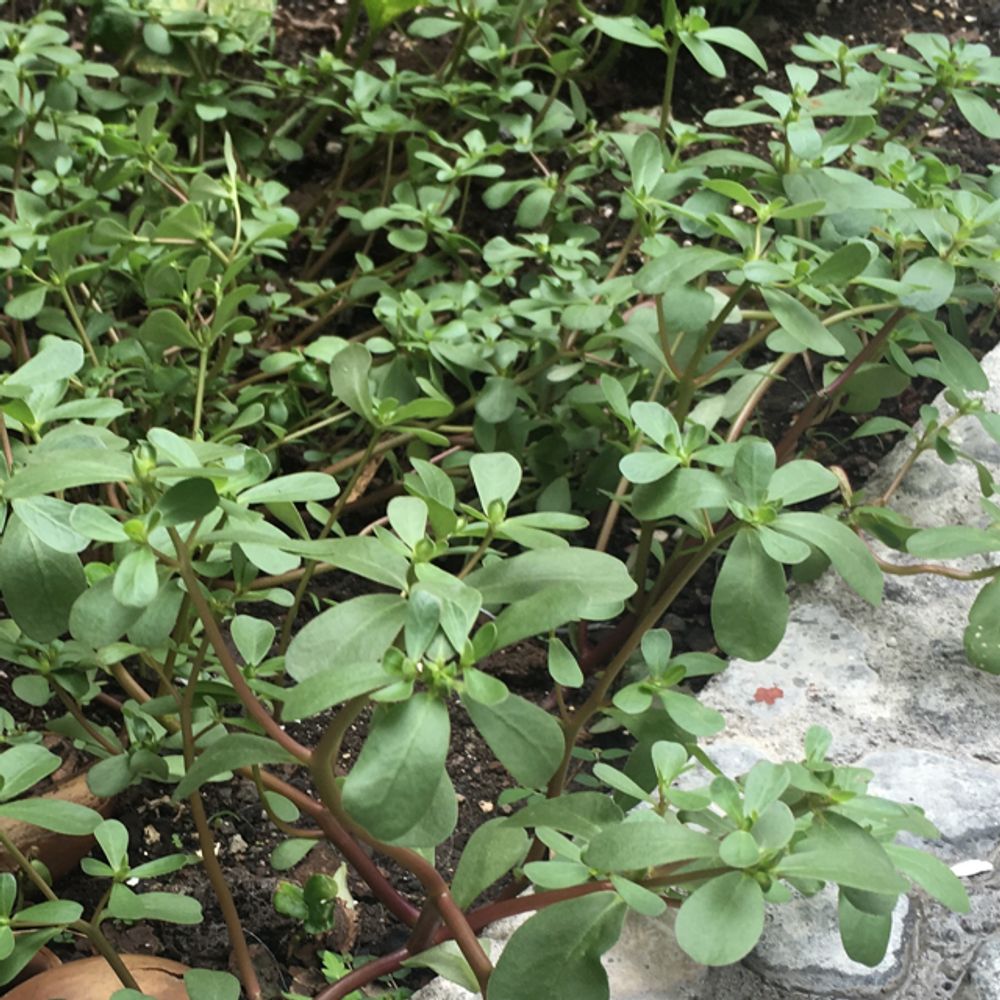Purslane
(Portulaca)

Description
Portulaca, commonly known as purslane, is a genus of succulent plants that belongs to the family Portulacaceae. This genus comprises around 100 species of herbaceous annual and perennial plants, which are native to warm and arid regions of the world. Portulaca is an important genus for gardeners and horticulturists, as it includes many species that are prized for their colorful flowers, low maintenance requirements, and drought tolerance. In this article, we will explore the characteristics, cultivation, and uses of Portulaca plants. Classification and Morphology The genus Portulaca is a member of the family Portulacaceae, which includes around 20 genera and 500 species of mostly herbaceous plants. The plants in this family are characterized by their succulent stems and leaves, and their showy, often brightly colored flowers. Portulaca plants are typically small, annual or perennial herbs that range in size from a few centimeters to over a meter in height. They have a prostrate or ascending growth habit, with succulent, cylindrical stems that are often reddish or purplish in color. The leaves of Portulaca plants are simple, alternate, and succulent, with a linear or spatulate shape. They are typically arranged in rosettes or along the stems, and can range in color from green to reddish-brown or purple. The flowers of Portulaca plants are solitary or arranged in cymes or umbels, and are typically large and showy, with five petals and numerous stamens. The petals are typically brightly colored, and can range from white and yellow to pink, red, orange, and purple. Species and Cultivars There are around 100 species of Portulaca plants, which are distributed throughout the world, from the Americas to Africa, Asia, and Australia. Some of the most common and widely cultivated species of Portulaca include: Portulaca grandiflora: This species is native to South America, and is widely cultivated as an ornamental plant for its large, showy flowers, which can range in color from white and yellow to pink, red, and purple. Portulaca oleracea: This species is native to Eurasia, but has naturalized in many parts of the world, including North America. It is an annual herb that is widely regarded as a weed, but is also edible and has medicinal properties. Portulaca pilosa: This species is native to South America, and is widely cultivated as an ornamental plant for its small, delicate flowers, which can range in color from white and yellow to pink and purple. There are also many cultivars of Portulaca plants, which have been selected for their flower color, size, and form. Some of the most popular cultivars include: 'Happy Hour': This cultivar has large, double flowers in shades of pink, red, orange, and yellow. 'Sundial': This cultivar has semi-double flowers in shades of pink, red, orange, and yellow, and is noted for its heat tolerance and long flowering season. 'Moss Rose': This cultivar has small, rose-like flowers in shades of pink, red, and white, and is noted for its low-growing, spreading habit. Cultivation and Propagation Portulaca plants are relatively easy to cultivate and propagate, and are well-suited to hot, dry climates and poor soils. Here are some tips for growing and propagating Portulaca plants: Cultivation: Site selection: Portulaca plants require full sun and well-drained soil. They are tolerant of poor soils and drought, but will not grow well in wet or waterlogged soils. Planting: Portulaca plants can be started from seed or transplanted seedlings. Seeds can be sown directly into the garden in spring, after the danger of frost has passed. Plant the seeds about 1/8 to 1/4 inch deep and 6 to 12 inches apart. Water gently after planting, and keep the soil moist until the seeds germinate. Watering: Portulaca plants are drought tolerant, but still require occasional watering during periods of extended drought or high temperatures. Water deeply and infrequently, allowing the soil to dry out between waterings. Fertilization: Portulaca plants do not require regular fertilization, but may benefit from an application of a balanced fertilizer in early spring. Pruning: Portulaca plants do not require regular pruning, but may benefit from deadheading to encourage additional blooms. Propagation: Seed propagation: Portulaca plants can be propagated from seed. Collect the seeds from mature plants in late summer or fall, and store them in a cool, dry place until spring. Sow the seeds directly into the garden in spring, following the same instructions for planting as above. Stem cuttings: Portulaca plants can also be propagated from stem cuttings. Take a stem cutting from a healthy, mature plant in early summer, and remove the lower leaves. Dip the cut end of the stem in rooting hormone, and plant it in a pot filled with a well-draining soil mix. Water gently, and keep the soil moist until the cutting has rooted. Division: Portulaca plants can be divided in the spring, when new growth begins to emerge. Gently dig up the plant and separate it into smaller sections, being careful not to damage the roots. Replant the sections in well-drained soil, and water gently until established. Overall, Portulaca plants are relatively easy to grow and propagate, and make an excellent addition to any garden or landscape. With their colorful flowers and low maintenance requirements, they are a great choice for gardeners looking for a low-maintenance, drought-tolerant plant.
Taxonomic tree:







